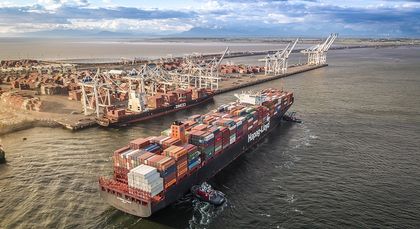
The application I’m working on recently had a significant change: we decided to go from something wholly closed (behind a connection wall) to something more open. Which means, searchable on the internet.
Two big topics came to the top of my priorities: SEO and Web Performance.
As per usual, I started with a Google Lighthouse audit. The result was far from great.

With the help of Google and Lighthouse, I ended up with a large to-do list.
Step 1: lazy loading images
By default, images in the browser load immediately. It can lead to a bottleneck when you try to print many images on one page. To prevent this, you can change this default attribute and lazy load images.
// Before<img src="/media/banana.jpg" alt="a banana" />
// After<img src="/media/banana.jpg" alt="a banana" loading="lazy" />In a nutshell, you can defer the image loading. When your screen is about to see the image, it loads it automatically.
Step 2: using an image CDN
Most of our assets (images, pdf, video) are hosted on a S3 bucket. When your app directly points to a S3 bucket you have zero compression, no image optimisation and it uses HTTP 1.1.
Using an image CDN addresses these issues. We picked Cloudinary which is a paid product. We decided to go for this tool for a simple reason: it’s easy to use.
// beforehttps://s3-bucket.com/image.jpg
// afterhttps://res.cloudinary.com/{CLOUDINARY_ID}/image/fetch/w_80,h_80,c_thumb/https://s3-bucket.com/image.jpgThe 2nd URL will return a thumbnail of 80x80px of the original link. It’s automatically served with http/2 and the HTTP response has the right headers (for caching).
Step 3: code splitting (with react-router)
For routing, we use React Router for linking routes with components. Our routing system was similar to this one:
// Beforeimport { createBrowserRouter } from 'react-router-dom'import SearchLanding from '@/modules/search/SearchLanding'import ResetPassword from '@/modules/account/ResetPassword'
export const router = createBrowserRouter([ { path: '/', element: <App />, children: [ { path: 'search', element: <SearchLanding />, }, { path: 'reset-password', element: <ResetPassword />, }, // ... ], },])This generates a big JS file with the entire application. It’s a pity to load the entire application when you only want to see one page.
Fortunately, this problem can be addressed with React Suspense.
// Afterimport { lazy, Suspense } from 'react'import Loader from '@/modules/common/Loader'
const SearchLanding = lazy(() => import('@/modules/search/SearchLanding'))const ResetPassword = lazy(() => import('@/modules/account/ResetPassword'))
export const router = createBrowserRouter([ { path: '/', element: <App />, children: [ { path: 'search', element: ( <Suspense fallback={<Loader />}> <SearchLanding /> </Suspense> ), }, { path: 'reset-password', element: ( <Suspense fallback={<Loader />}> <ResetPassword /> </Suspense> ), }, // ... ], },])With this, the application will be bundled into many files. So “the user only loads what is needed”. When the user goes from one page to another, he will see the loader while the component is being loaded.
Step 4: Using a CDN for HTTP/2
In the previous step, I show you how we went from 1 big JS file to many files (~80). But, loading what you already need can be very costly. Mostly when you’re only using HTTP/1.1. This protocol only allows downloading one file at a time.
One of the biggest additions of HTTP/2 (h2) is the “Request and response multiplexing”. When it came out, it was like a revolution in the browser. It allows the browser to download multiple files with a single request. Because “a picture is worth a thousand words”, here’s a cool animation if you want to better understand why h2 is faster.
Our application was running on a Heroku dyno. Unfortunately, they do not support h2 (at the time being). To get it, while keeping our Heroku infrastructure, the solution is to use a CDN. CloudFront (AWS product) was the most relevant pick for us because we already had a few tools using the AWS suite. Same as our image CDN, CloudFront gives us a bunch of good additions such as h2, optimised caching… But it’s a hell of a mess to configure.
Step 5: lazy load big components
Our coolest component is also the worst in terms of performance. When a user uploads a technical drawing, we render it in 3D. Under the hood, it uses a bunch of three.js libraries which render HTML canvas. The component itself weighs ~2Mb (thanks Three.js!).

Unfortunately for us, these technical drawings can also be cumbersome. The file needed to display the canvas ranges from 1 to ~12MB. On our feed page, we can display a lot of them.
I ended up with a solution mixing React.suspense and a custom hook:
- React.suspense - to defer loading the JS assets needed to show the component.
- A
useIsVisibleOnScreenhook - to defer loading the assets needed to show the 3D piece. In a nutshell, this hook detects if the component is in the viewport or if he is about to be seen.
Outcome
…after I these changes, I did another bunch of audits and tada! I finally got a more decent score 🎉

I know what you think: it could be 100.
But, this is not a side project, nor a “Hello World” project. Focusing on the last 10 remaining points would be too time-consuming for me. It’s not worth the trouble.
What I liked about this journey was the simplicity of the actions to obtain a decent performance score. I mean, it’s not rocket science. I mostly followed tips given by Lighthouse and other best practices that can easily be found on the internet.
About the author

Hey, I'm Maxence Poutord, a passionate software engineer. In my day-to-day job, I'm working as a senior front-end engineer at Orderfox. When I'm not working, you can find me travelling the world or cooking.
Follow me on BlueskyRecommended posts

1. Split your application into completely isolated modules. 2. Consider micro-frontends architecture. 3. Don't put everything in the Vuex Store

I've been maintaining a massive Vue.js codebase for the last 3 years. Here are 9 lessons I've learned along the way.